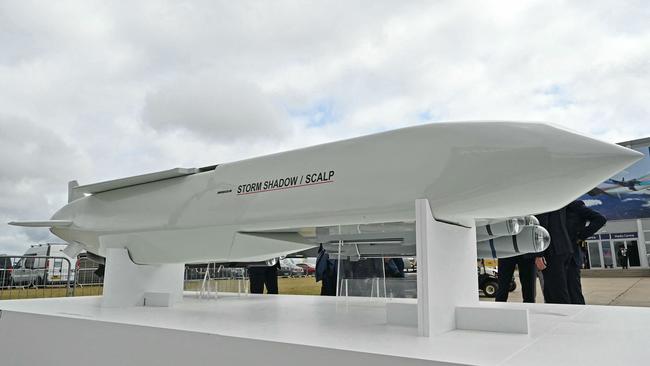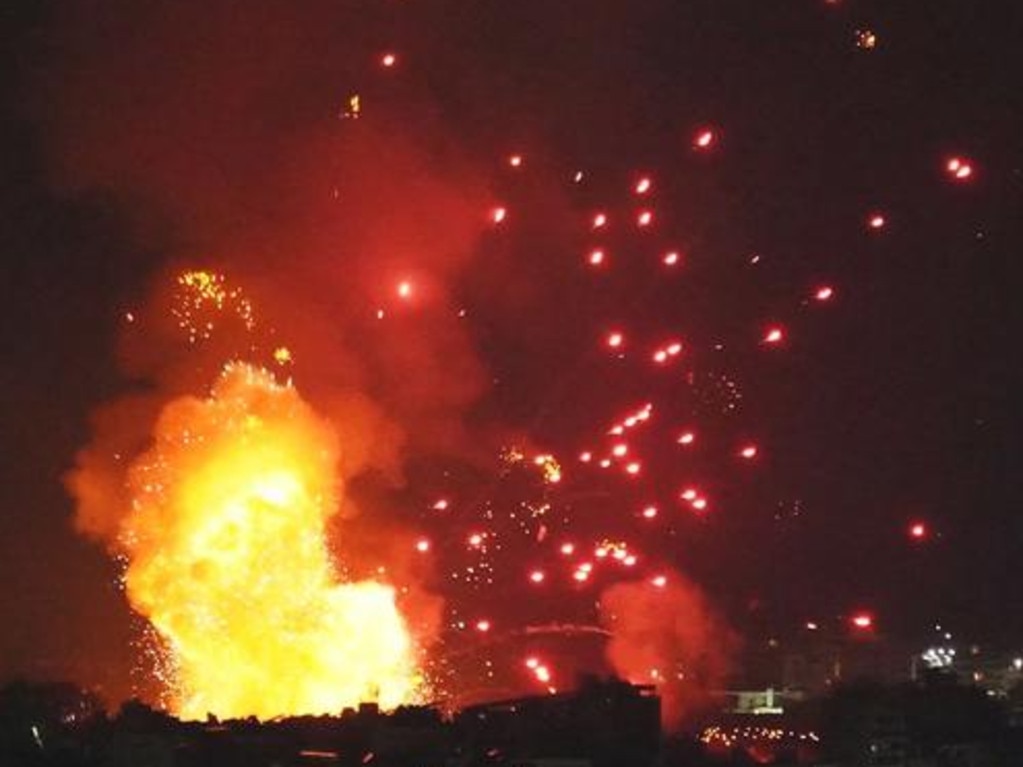Ukraine’s Western missiles threaten big Russian assets: airports, ammo depots and command headquarters
Russia’s airfields, ammo depots and training grounds are no longer safe. Hundreds of targets are now within reach of Ukraine’s longer-range missiles.

A half-dozen US ballistic missiles, fired by Ukraine, slammed into an ammunition depot some 120 kilometers across the Russian border early Tuesday, setting off further detonations that turned the sky red.
The following morning, 10 British-provided cruise missiles pounded the vicinity of a Kremlin-run sanatorium that was apparently used as a military headquarters, smashing one after another in the town of Marino, located in Russia’s Kursk region about 32 kilometers from the front line there.
These two strikes, the first Kyiv launched with Western-supplied missiles after receiving authorisation from the US and allies, show the range of military targets now available to Kyiv.
The US and its allies have permitted the use of the hard-hitting and difficult-to-intercept missiles at a critical time for Ukraine, which is struggling to hold back mounting Russian offensives along the 800-mile front line. Striking deeper in the rear will help Ukraine slow Russia’s war machine before it delivers more troops, supplies and bombs onto the front lines, where they are most dangerous.
How much of a difference the new capability will make on the battlefield depends on how many missiles Ukraine receives and how effectively it uses them.
The permission comes late for Kyiv, which made the first requests to strike inside Russia using UK-supplied Storm Shadow and US Army Tactical Missile System, or ATACMS, this spring. It already had permission to fire shorter-range artillery into Russia.

US caution over authorising use of the missiles, which it explained by fear of escalation, gave Moscow time to move some of the highest value targets -- such as airplanes and helicopters -- out of range. That in itself was a positive for Ukraine, military analysts said, as the farther Russian equipment is from the front, the longer it takes to deploy onto the battlefield, and the less time it can spend there given fuel constraints.
Even with the long lead time, there is plenty for Ukraine to aim at. Russian airfields, ammo depots and training grounds are no longer safe as Ukraine chooses what to target. Hundreds of targets are now within reach of the newly authorised weapons, which pack more punch than the long-range drones Ukraine has been using to strike deep inside Russia.
The Institute for the Study of War, a Washington-based think tank, has compiled a map of some 200 military targets in range of ATACMS, which has a range of up to 305 kilometers, and Storm Shadow, which can hit about 249 kilometers.
The map reflects only a slice of the targets that can be deduced from publicly available information, said George Barros, an analyst at ISW. Ukraine can also act on information from intelligence agencies to go after command headquarters and other facilities that shift location.
“Eliminating a brigade or division headquarters can plunge hundreds of Russian soldiers into disarray for days,” Mr Barros said.
Previously comfortable on their own territory, Russians train troops, repair equipment, establish communications centers and run logistics routes all within reach of ATACMS and Storm Shadows. While Ukraine has had to maneuver to deliver equipment to its front-line troops, Russia hasn’t, giving it a battlefield advantage.
One of the largest concentrations Ukraine could potentially target is in Russia’s southern Rostov province. There, at least four airports are within reach, although some double as civilian airports and are unlikely to be targeted. Rostov is the landing place for many troops, transported in large military aircraft, equipped, loaded onto buses and driven to Ukraine’s occupied east. A strike in the region could be devastating and scatter a key deployment ground for Russian troops.

It couldn’t be determined whether Washington imposed any restrictions on the types of targets or regions Kyiv can choose.
In what was widely perceived as a response to Ukraine’s strikes this week, Russia fired a nuclear-capable intermediate range ballistic missile at the central Ukrainian city of Dnipro on Thursday, a historic first.
Ukraine hasn’t appeared to use ATACMS or Storm Shadow missiles in Russian territory since. After the Russian IRBM strike, Ukrainian President Volodymyr Zelensky said use of the Western weapons is within Ukraine’s legal right to self-defense.
“Putin is lying when he says that Ukraine’s use of long-range weapons is supposedly some new step of ours,” he said. “We have used this weapon before.” Ukraine’s armed forces had already used the weapons on occupied territories, including in Crimea, where they have bombarded the ferries Russia uses to get supplies across the Kerch Strait to the occupied Ukrainian peninsula from mainland Russia. They have also carried out a series of attacks on Russian air defenses, striking missile launchers and radars.
The Wall Street Journal




